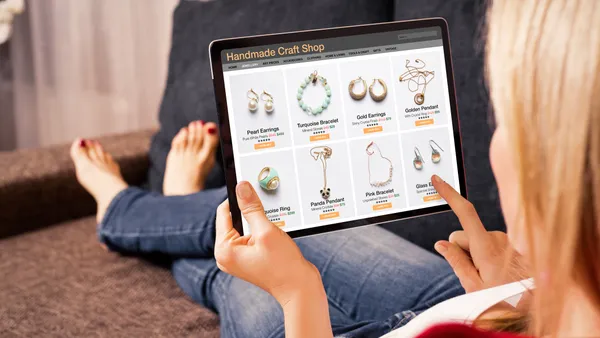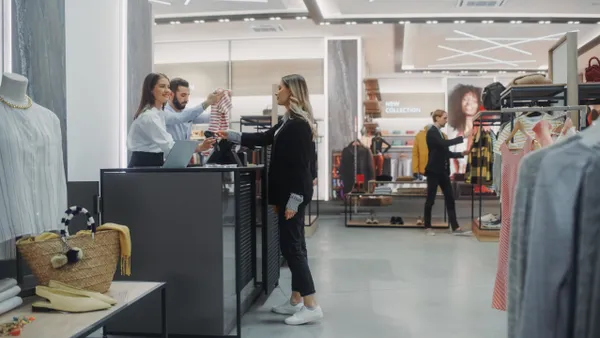Dive Brief:
-
Gen Z customers are frequenting brick-and-mortar chains like UGG, The North Face, Payless and Vans more than other generations, revealing a higher inclination to buy luxury brands than millennials, whose top retailers included discounters like Ross, Rainbow and Ikea, according to a report from InMarket cited by GeoMarketing.
-
UGG, Gamestop, Sunglass Hut and The North Face actually over-index with Gen Z shoppers when it comes to in-store traffic, which might have to do with the relatively dependent nature of the young generation.
-
The report reveals slight differences between millennials and the growing Gen Z, which could be good news for retailers, but may pose problems when it comes to finding a strategy that will appeal to both generations.
Dive Insight:
Although Generation Z is only just coming of age, retailers are already turning their attention to the new group of consumers in hopes of attracting their buying power at an earl yage.
“Gen Z — the supergroup of digital natives born after 1995 — don’t know a world without the internet,” according to InMarket, adding that the generation is “poised to shake up the world as they become the prime-spending demographic.”
Indeed, the report highlights slight differences between millennials and Gen Z: While millennials grant their traffic to discounters over more pricey retailers, which InMarket suggests might be due to their experience during the Great Recession, Gen Z seems perfectly willing to shell out the extra cash for more upscale brands. Big retailers like Target and Walgreens are doing particularly poorly with Gen Z, indexing 15% lower than the average foot traffic in other businesses, according to the report.
That’s not to say that Gen Z doesn’t reflect trends seen with older generations. Similarly to millennials, 53% of whom still do most of their shopping in-store, the young generation has not given up on physical retail. Whether or not this trend will shift as Gen Z becomes more independent is unclear. Likewise, mobile and online will remain large factors for the young group, reflecting a broader trend, as 60% of shoppers already use their smartphones to look up information in-store.
Retailers will have to become more adept at not only marketing to the younger generation through their mobile devices, but also incorporating mobile and online into their in-store experience more broadly. One need only look at Sephora’s forays into mobile to recognize the value in this type of engagement for younger generations. The beauty retailer has invested heavily in its Virtual Artist mobile app as it continues to build out its concession spaces in J.C. Penney department stores.
On the other hand, the luxury-discounter disparity between millennials and Gen Z could pose problems for retailers attempting to appeal to both generations. We may see more retailers to make moves similar to Walmart, whose e-commerce acquisitions like stylish menswear site Bonobos and popular women’s apparel site Modcloth are helping to broaden the retailer’s customer base.












